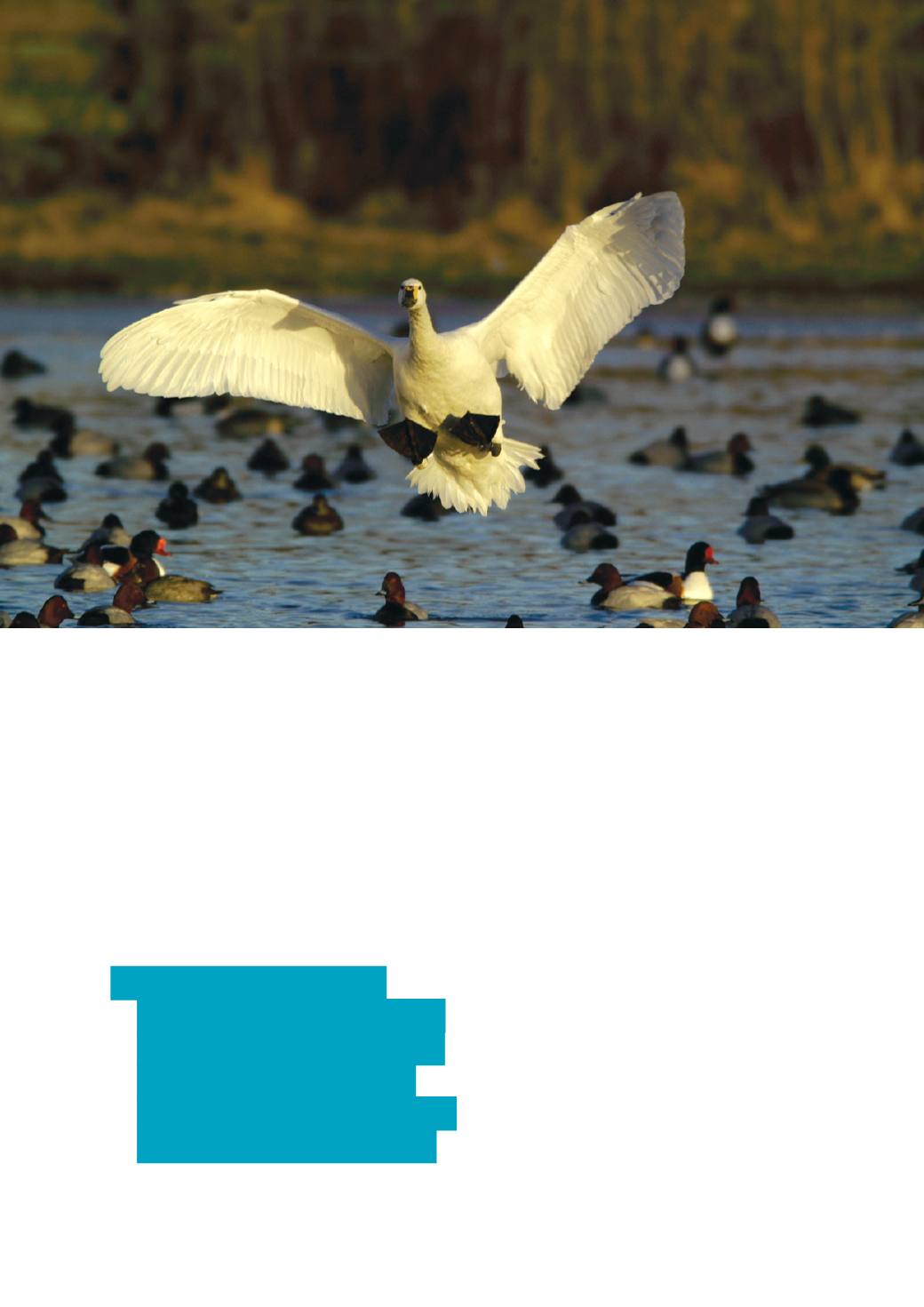
10
WWT Report and Financial Statements 2012/13
GPS data loggers to follow detailed daily movements
between roosts and feeding areas on their Bulgarian
wintering grounds. The red-breasted goose field station at
Durankulak, Bulgaria was completed.
WWT’s contribution to the waterbird monitoring
programme in the Yangtze River floodplain in China
included helping to run a training course at Nanji NNR
(Poyang) and a promotional event for waterbird monitoring
at the Dongting Hu bird race. In January 2013, surveys of
Baer’s pochard at key Chinese sites found only 45 birds.
This species seems to be rapidly approaching extinction
in the wild and urgent action is needed to save it.
WWT helped produce the African-Eurasian Waterbird
Agreement (AEWA) Bewick’s swan action plan which was
adopted at the AEWA Meeting of Parties in May 2012.
WWT is concerned about the number and extent of wind
farms planned along the Bewick’s swan migration route
from South East England to the Netherlands, and we
continued studies on the migration routes of swans and
geese in relation to wind farms.
Our collaborative work on the Greenland white-fronted
goose suggests that low and declining breeding success
is behind the recent decline, but that WWT also urgently
needs to understand the high rates of emigration and
immigration between the different wintering flocks.
GPS-accelerometer tags on birds from Wexford, Ireland
and Loch Ken (near Caerlaverock) are enabling WWT
to examine the migration and reproductive strategies of
these birds remotely. The data should help us understand
why breeding success is so low. Information from birds
fitted with GPS collars in Scotland should help guide
advice on habitat management and land-use planning.
As part of the conservation breeding and ‘headstarting’
programme for the Critically Endangered spoon-billed
sandpiper, 20 eggs were flown to Slimbridge from the
Russian Far North East in 2012, producing 17 chicks. A
further nine birds were reared and released ‘on location’ in
the Russian Far North East. Of the 28 birds at Slimbridge
we have 15 males, 12 females and one of unknown
sex. We hope this achieves our target of 10 breeding
“This is conservation at the
edge; it’s risky work, in difficult
conditions, but my colleagues
have proved yet again how
incredibly experienced they are
at rearing endangered birds.”
Baz Hughes, Head of Species Conservation
Photo: Bewick’s swan, © WWT / Richard Taylor-Jones


